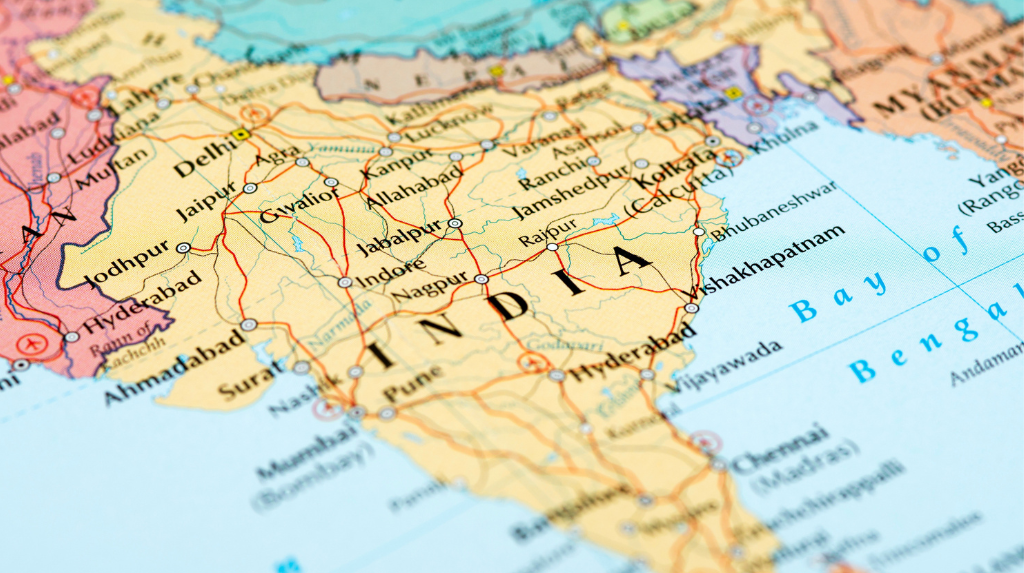Indian workers in the United States who are seeking an employment-based green card are facing an incredibly long wait — some may have to wait up to 134 years, according to a recent analysis by the Cato Institute, a libertarian think tank. This backlog is a result of the U.S. government’s annual cap on employment-based visas and the 7% per-country limit that restricts how many applicants from each country can receive a green card each year.
The situation is particularly dire for Indian workers, with more than 1.1 million cases in the backlog, out of a total of 1.8 million employment-based green card cases. This means that a vast majority of the people stuck in the backlog are from India.
Why is the Wait So Long?
The U.S. has an annual cap of 140,000 employment-based green cards for workers, which includes family members, but the number of applicants far exceeds this limit. In addition to this cap, the 7% per-country limit means that no single country can claim more than 7% of the total available visas, regardless of how many applicants there are from that country. For countries with large populations of skilled workers, like India, this creates a huge backlog.
As of March 2023, 80,324 employment-based petitions were backlogged, impacting 171,635 applicants (including family members). On top of that, there were 1.3 million people waiting on a green card list, and 289,000 people in the process of adjusting their status. The U.S. State Department has not publicly shared the exact number of people waiting for visa processing at consulates and embassies abroad, though these numbers add to the overall backlog.
How Bad Is the Backlog for Indian Workers?
For applicants from India, the wait time is especially extreme. The backlog has caused delays for both workers in the EB-2 and EB-3 categories, which are for individuals with advanced degrees or a bachelor’s degree, respectively. The Cato Institute estimates that for new applicants in these categories, the wait can be as long as 134 years.
To put this in perspective, this backlog means that many workers may never receive their green cards, as an estimated 424,000 applicants will die while waiting for their turn.
How Do Other Countries Get Affected?
While the Indian worker backlog is the largest by far, other countries are also contributing to the overall delay. Nearly 250,000 cases come from China (14% of the total backlog), while the Northern Triangle countries of El Salvador, Honduras, and Guatemala add about 10%, mostly in the EB-4 category for special immigrants such as Afghan and Iraqi interpreters.
The Breakdown of the Backlog
The majority of the green card backlog falls under the EB-2 category, which is for workers with advanced degrees (e.g., Master’s, Ph.D.). Approximately 19% of the cases are from the EB-3 category, which is for workers with a bachelor’s degree, and about 13% of the backlog is from the EB-4 category for special immigrants. Additionally, EB-5 investors, who are wealthy individuals investing in U.S. businesses, account for 6% of the cases.
What Does This Mean for Indian Workers?
For the majority of Indian applicants, the long wait means that their chances of receiving a green card in their lifetime are slim. According to Cato, more than 400,000 Indian workers currently in the green card backlog may never see their applications approved because of how long they would have to wait. Indian workers hoping for a green card are essentially facing a life sentence of waiting, with no clear end in sight.
Why the Green Card Wait Is a Serious Issue
The long wait times for Indian workers seeking green cards are having real-life consequences. Many of these workers are highly skilled professionals who are crucial to the U.S. economy. However, they face personal, financial, and professional uncertainty as they wait years or even decades to receive their permanent resident status. The U.S. immigration system’s limits are not only frustrating but also detrimental to the country’s workforce, especially when it comes to keeping talented individuals in the U.S.
How does the U.S. immigration system prioritize green card applications
The U.S. immigration system prioritizes green card applications through a structured preference system that categorizes applicants into family-based and employment-based categories. This system was established to manage the allocation of visas and ensure a fair process for immigrants from various backgrounds.
Preference Categories
Family-Based Immigrants:
This category is divided into several preferences:
- First Preference (F1): Unmarried adult children of U.S. citizens.
- Second Preference (F2): Spouses and children of lawful permanent residents (LPRs).
- Third Preference (F3): Married children of U.S. citizens.
- Fourth Preference (F4): Siblings of U.S. citizens.
Immediate relatives of U.S. citizens (spouses, children, and parents) are not subject to annual caps, allowing them to bypass the backlog associated with preference categories.
Employment-Based Immigrants:
This category is also divided into five preferences:
- EB-1: Priority workers, including individuals with extraordinary abilities.
- EB-2: Professionals with advanced degrees or exceptional abilities.
- EB-3: Skilled workers, professionals, and unskilled workers.
- EB-4: Special immigrants, including religious workers.
- EB-5: Investors who create jobs in the U.S..
Employment-based visas are allocated based on the applicant’s priority date, which is determined by when their petition was filed.
Visa Allocation Process
- The government caps the total number of green cards issued each year at approximately 675,000, with specific limits for family-based and employment-based categories. Each country can receive no more than 7% of the total number of visas available in these categories.
- When demand exceeds supply in any category or country, a backlog forms. The Department of State publishes a monthly visa bulletin that indicates when applicants can proceed based on their priority dates.
- Priority dates are crucial; they determine an applicant’s place in line for a green card. When an applicant’s priority date becomes “current,” they can apply for adjustment of status or an immigrant visa
The main reasons for the long wait times for Indian workers seeking green card
The long wait times for Indian nationals seeking green cards are primarily attributed to a combination of regulatory constraints and overwhelming demand. Here are the main reasons:
1. Per-Country Limitations
The U.S. immigration system imposes a per-country limit on the number of green cards issued annually, capping the number at 7% for any single country. This regulation disproportionately affects Indian applicants due to India’s large population, leading to significant backlogs compared to countries with smaller populations, such as China and the Philippines.
2. High Demand for Employment-Based Green Cards
Indian nationals have an exceptionally high demand for employment-based green cards, particularly in categories like EB-1, EB-2, and EB-3, which target highly skilled professionals. Recent estimates show that over 1.2 million Indians are waiting in these categories, with some individuals facing wait times that exceed a decade or more. The limited annual quota of 140,000 employment-based green cards (including dependents) exacerbates the backlog, as it fails to keep pace with the growing demand for technical talent in the U.S.
3. Inefficient Utilization of Green Card Quotas
Historically, the U.S. government has failed to issue all available green card slots each year due to bureaucratic inefficiencies. Since 1921, millions of green card spots have gone unutilized, which further compounds the backlog faced by applicants.
4. Impact on Families
Long wait times not only affect individual applicants but also have significant implications for families. Many Indian applicants prioritize their own applications over those of their spouses and children, leading to prolonged family separations.
5. Legislative Challenges
Efforts to reform the immigration system to address these issues have faced significant political hurdles. Changes such as increasing the annual green card quota or revising the per-country limit require congressional action, which has been slow and complex.
Are lawmakers proposing changes to U.S. immigration laws to address the backlog?
Proposed changes to U.S. immigration laws aim to reduce substantial backlogs in applications and court hearings, which the COVID-19 pandemic and pre-existing inefficiencies have exacerbated. Here are key developments:
Current Backlogs and Challenges
- Significant Delays: The U.S. immigration system is facing unprecedented backlogs, with some immigration cases pending for over three years. As of late 2023, approximately 1.6 million applications for employment authorization were backlogged, more than double the numbers from early 2020.
- Impact on Policies: These delays threaten the Biden administration’s immigration agenda, including the expansion of protections for various immigrant groups and the restructuring of the asylum process at the U.S.-Mexico border.
Proposed Legislative Changes
- Increase in Employment-Based Green Cards: Proposed legislation could raise the cap on employment-based green cards and allow for unused visas from previous years to be utilized. This change would also exempt spouses and children of employment-based visa holders from counting against annual caps, potentially alleviating backlog issues.
- Elimination of Per-Country Caps: Another proposal seeks to remove the per-country limit that restricts immigrants from any single nation to 7% of green cards issued annually, which could help clear long-standing backlogs for applicants from countries with high demand.
Administrative Efforts
- USCIS Initiatives: The U.S. Citizenship and Immigration Services (USCIS) has set internal goals to reduce processing times by increasing capacity, improving technology, and expanding staffing. These initiatives are part of a broader effort to modernize operations and enhance efficiency in handling applications.
- Asylum Process Reforms: There are ongoing discussions about shifting asylum case processing from overwhelmed immigration courts to the USCIS Asylum Division to expedite decisions and reduce backlogs.
Future Directions
- Comprehensive Frameworks: Organizations like FWD.us are advocating for a comprehensive approach to reform border security and modernize the asylum system. Their proposals include fast-tracking asylum adjudications and creating new legal pathways for immigrants.
The Indian worker backlog highlights serious issues in the U.S. immigration system, particularly the 7% per-country cap and the annual visa limits. To address these delays, many experts believe that immigration reform is necessary to ensure that the system is fairer and more efficient. Until then, Indian workers will continue to face a frustrating and lengthy wait for green cards, potentially missing out on the opportunity to build a permanent life in the U.S.
How Law and Visas Can Help?
At Law and Visas, our team of expert immigration consultants is here to make your travel to the U.S. straightforward and successful. Whether you’re applying for a Diversity Visa Lottery or a E-2 Visa, we handle every step—from preparing your application to gathering the required documents.
Our Immigration Consultants and Lawyers ensure that your application meets the highest standards, with no details missed. We’ll also keep you informed throughout the process and coordinate with the immigration office or embassy on your behalf.
Law and Visas has a strong record of helping clients secure the visas/permits they need to visit the United States. You can call us today at +234 812 5505 986 to learn how we can help you.





